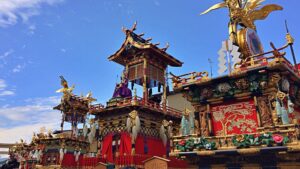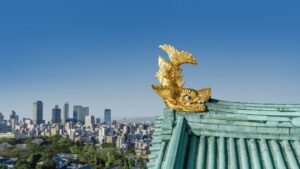Ise Jingu Shrine, Geku First and Then Naiku
Ise Jingu (Ise Grand Shrine), officially called Jingu, consists of 125 Shinto shrines. Crossing the Uji Bridge over the Isuzu River at the entrance of a main shrine, Kotaijingu (Naiku), you are in a sacred world where the deities dwell. As you walk the pea gravel approach along the giant cedar trees, you may feel […]
Takayama Festival (Spring and Autumn), Keep your eyes on Karakuri doll’s performance
In Spring, the Karakuri doll scatters a lot of cherry blossoms to commemorate the arrival of spring. In Autumn, one small Karakuri doll moves by hanging and moving across several bars one by one riding piggyback on the Hotei, who is known as a deity of good luck. People watch its success breathlessly. Once it […]
Atsuta Jingu Shrine, Enshrines a Sacred Sword, "Kusanagi-no-Tsurugi"
Atsuta Jingu enshrines a sacred sword, Kusanagi-no-Tsurugi, as one of Three Sacred Treasures of the Imperial Family since ancient times. It houses 20 swords designated as national treasures and about 6,000 treasures donated by the Imperial Family and many samurai.
Why was Nagoya Castle built? For the iron defense of the Tokugawa Shogunate
Nagoya Castle was built by a warlord, Tokugawa Ieyasu, as a solid fortress in 1612, just two years before the Winter Siege of Osaka against the Toyotomi clan. After Ieyasu's victory, Nagoya Castle kept the Western lords in check in the middle of the Tokaido road connecting Edo (Tokyo) and Osaka. He was eager to […]




